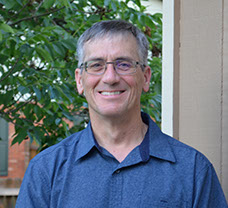We use cookies on this site to enhance your experience.
By selecting “Accept” and continuing to use this website, you consent to the use of cookies.

Donald Estep is the Scientific Director of CANSSI. He recently joined the Department of Statistics and Actuarial Science at Simon Fraser University, moving from the Department of Statistics at Colorado State University, where he was Department Chair, University Distinguished Professor and University Interdisciplinary Research Scholar. His research interests include uncertainty quantification for complex physics models, stochastic inverse problems, adaptive computation, and modeling of multiscale systems. His application interests include ecology, materials science, detection of black holes, modeling of fusion reaction, analysis of nuclear fuels, hurricane wave forecasting, flow in porous media, and electromagnetic scattering. His research has been supported by a multiple government agencies and national laboratories.
Don served as the (founding) Chair of the SIAM Activity Group on Uncertainty Quantification, (founding) Co-Editor in Chief of the SIAM/ASA Journal on Uncertainty Quantification, and as SIAM representative to the Governing Board of SAMSI. His awards include Fellow of the Society for Industrial and Applied Mathematics, the Computational and Mathematical Methods in Sciences and Engineering (CMMSE) Prize, and the Chalmers Jubilee Professorship of Chalmers University of Technology. He has served on several scientific advisory panels for the U.S. National Science Foundation and Department of Energy and on the Sandia National Laboratories CISE External Review Board.
Determining information about the state of a complex physical system from observations of its behavior is a fundamental problem in scientific inference and engineering design. Often, this can be formulated as the stochastic inverse problem of determining probability structures on parameters for a physics model corresponding to a probability structure on the output of the model. We describe a formulation and solution method for stochastic inverse problems that is based on functional analysis, differential geometry, and probability/measure theory. This approach yields a computationally tractable problem while avoiding alterations of the model like regularization and ad hoc assumptions about the probability structures. We present several examples, including a high-dimensional application to determination of parameter fields in storm surge models. We also describe work aimed at defining a notion of condition for stochastic inverse problems and tackling the related problem of designing sets of optimal observable quantities.
Wednesday, March 4, 2020
3:00 p.m.
P327 (Peters Building)